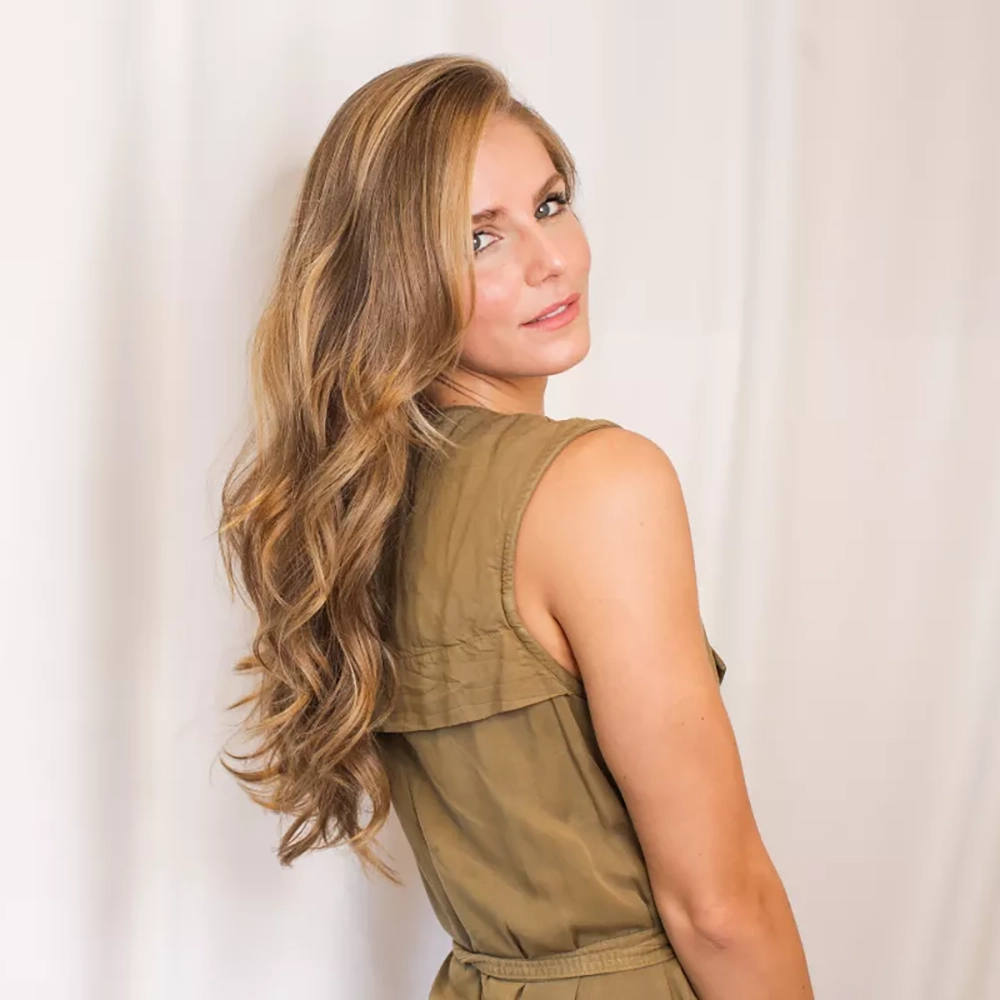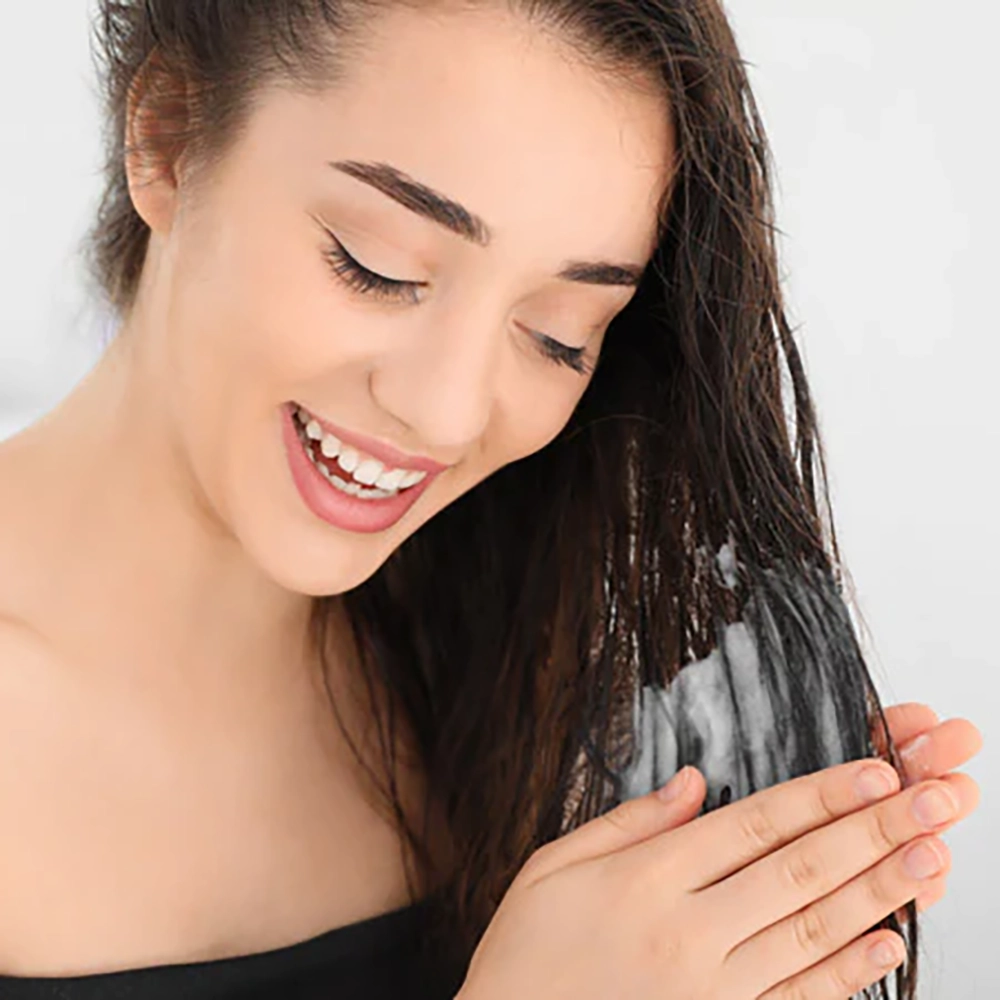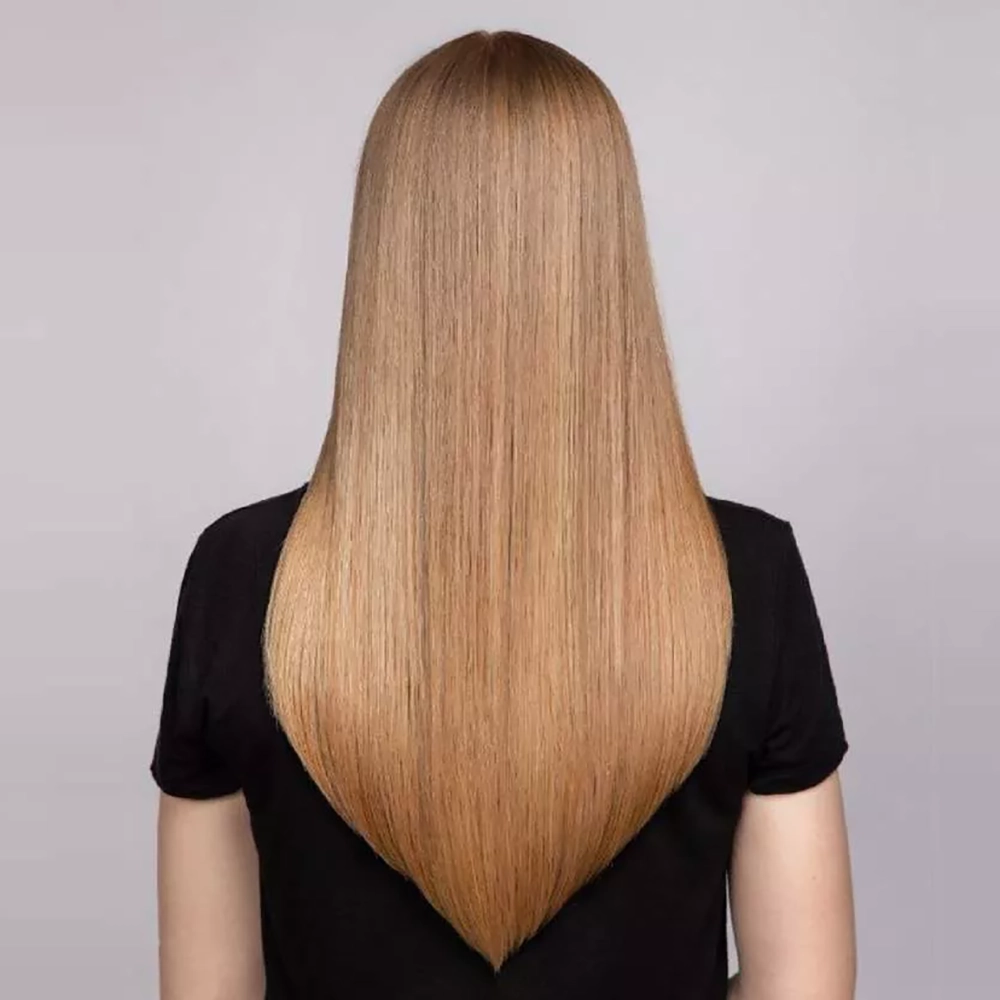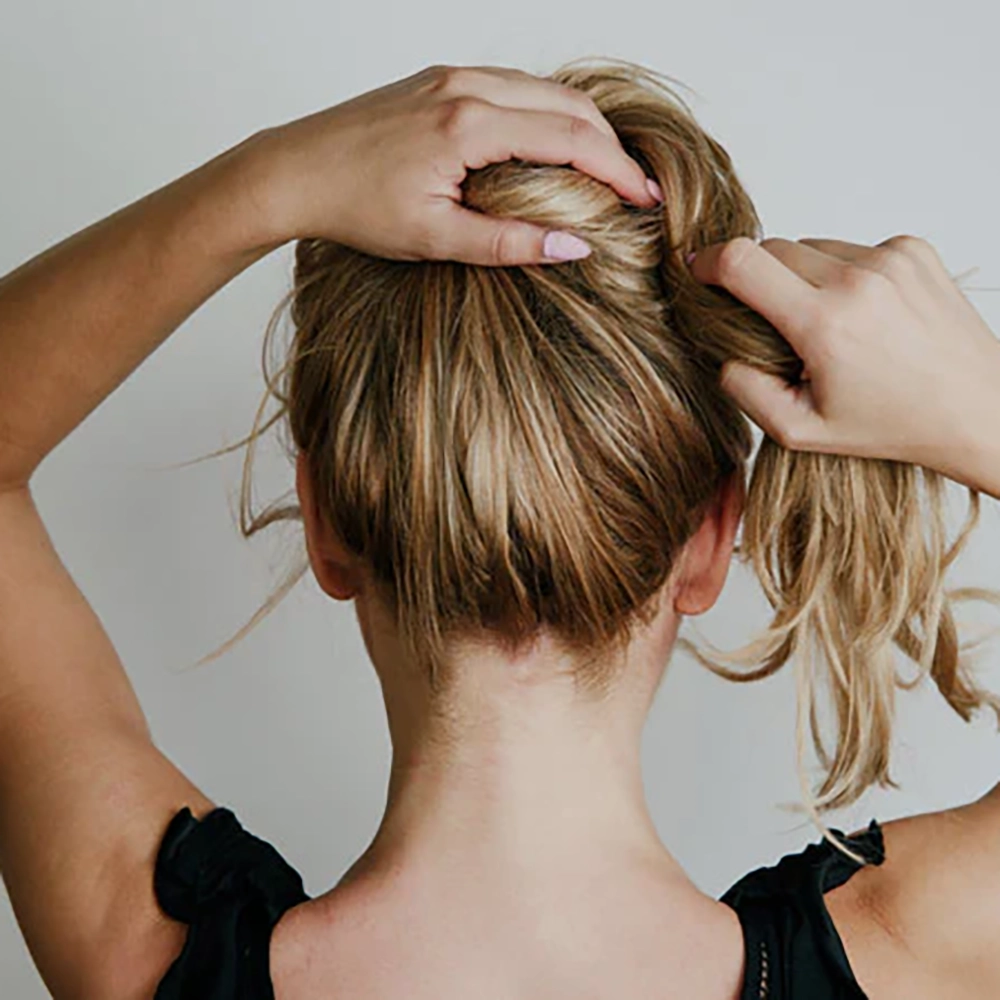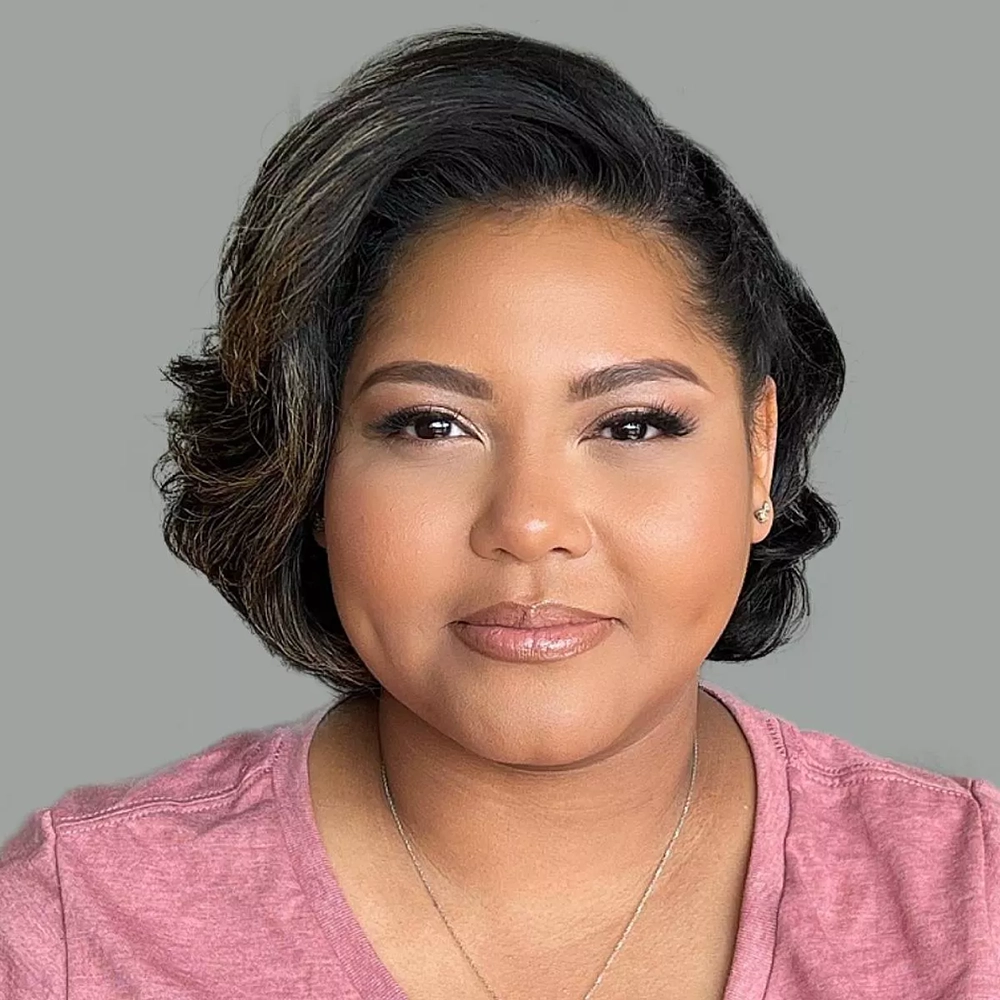Causes of Puffy Hair
Having puffy hair can be a frustrating experience, especially when you’re trying to achieve a sleek and polished look. There are several factors that can contribute to puffy hair, and understanding these causes is the first step towards finding a solution. Genetics plays a significant role in determining the texture and density of your hair. If you have naturally thick and frizzy hair, you may be more prone to experiencing puffiness. Humidity is another major culprit that can lead to hair puffiness. When the air is high in moisture, it disrupts the hydrogen bonds in the hair, causing it to swell and appear frizzy. Damage from excessive heat styling, chemical treatments, and aggressive brushing can also lead to puffy hair.
Puffy hair can also be a result of product buildup on the scalp and hair strands. Using heavy styling products, such as gels, mousses, and hairsprays, can weigh down the hair and make it appear puffy. It’s important to choose lightweight and non-greasy products specifically designed for your hair type to avoid this issue.
Another cause of hair puffiness is lack of moisture. When your hair is dry and dehydrated, it tends to absorb moisture from the environment, causing it to swell and appear frizzy. This can be especially common in individuals with naturally curly or wavy hair, as these hair types are more prone to moisture loss.
- Genetics
- Humidity
- Damage from heat styling, chemicals, and aggressive brushing
- Product buildup
- Lack of moisture
| Causes of Puffy Hair | ||
|---|---|---|
| Genetics | Humidity | Damage from heat styling, chemicals, and aggressive brushing |
| Product buildup | Lack of moisture |
Now that you understand the various causes of puffy hair, you can take steps to address these issues and achieve smoother and more manageable locks. This may involve adjusting your haircare routine, using appropriate hair products, and protecting your hair from environmental factors. By targeting the root cause of your hair puffiness, you can take control of your hairstyle and achieve the look you desire.
Understanding the Hair Texture
When it comes to hair, we all have different types and textures. Whether your hair is straight, wavy, curly, or coily, understanding your hair texture is crucial in order to properly care for and style your locks. Hair texture refers to the diameter of individual hair strands and how they feel to the touch. This can vary from fine to medium to coarse and can greatly influence the way your hair behaves and looks. Let’s dive deeper into the different hair textures and how to determine which one you have.
Firstly, let’s talk about fine hair. Fine hair is characterized by its small diameter, making it thinner and more delicate compared to other hair textures. People with fine hair often struggle with lack of volume and difficulty holding styles. On the other end of the spectrum, we have coarse hair. Coarse hair has a larger diameter, making it thicker and stronger. This hair texture tends to be more resistant to styling and can often appear dry or frizzy if not properly moisturized.
Next, we have wavy hair. Wavy hair falls in between straight and curly hair, with a slight bend or wave pattern. This hair texture can range from loose, beachy waves to more defined and structured waves. It can sometimes be prone to frizz and can benefit from products that enhance its natural texture. Lastly, we have curly and coily hair. Curly hair has well-defined curls, while coily hair has tight coils or spirals. Both of these hair textures are often prone to dryness and require extra moisture and care to maintain their shape and prevent frizz.
Understanding your hair texture is the first step in achieving healthy, manageable hair. By knowing whether you have fine, coarse, wavy, curly, or coily hair, you can choose the right products and styling techniques that work best for your specific hair type. So, take the time to analyze your hair and embrace its unique texture – it’s the key to unlocking your hair’s true potential!
Best Shampoos and Conditioners for Puffy Hair
If you have puffy hair, you know how frustrating it can be to tame those unruly locks. Luckily, there are shampoos and conditioners specifically formulated to help reduce puffiness and give you smoother, more manageable hair. When choosing the best products for your hair type, it’s important to look for ingredients that provide hydration and nourishment without weighing your hair down.
One of the best shampoos for puffy hair is the “Moisture Renewal Shampoo”. This shampoo contains hyaluronic acid, which helps to retain moisture in the hair, preventing it from becoming dry and frizzy. It also contains argan oil, which is known for its ability to reduce puffiness and add shine to the hair. Another great option is the “Curl Defining Shampoo”, specially formulated for those with curly or wavy hair. It contains shea butter and coconut oil to help define and enhance your natural curls while reducing puffiness and frizz.
When it comes to conditioners, the “Hydrating Conditioner” is a top choice for puffy hair. This conditioner is enriched with aloe vera and jojoba oil, which provide deep hydration to the hair without weighing it down. It also contains keratin, which helps to strengthen and smooth the hair cuticles, reducing frizz and puffiness. Another excellent option is the “Volume Boosting Conditioner”, perfect for those with fine or thin hair. This conditioner contains biotin and panthenol to add volume and body to your hair, while still providing moisture and reducing puffiness.
In conclusion, using the right shampoos and conditioners can make a big difference in reducing puffiness and achieving smoother, more manageable hair. Look for products with hydrating and nourishing ingredients, such as hyaluronic acid, argan oil, shea butter, and aloe vera. Don’t forget to choose a conditioner that is suitable for your hair type, whether it’s curly, wavy, or fine. With these best products for puffy hair, you’ll be one step closer to achieving the luscious locks you’ve always dreamed of.
Natural Remedies to Reduce Hair Puffiness
If you have puffy hair, you know how frustrating it can be to tame those unruly locks. While there are many commercial hair products available in the market, they often contain harsh chemicals that can further damage your hair. Luckily, there are several natural remedies that can help to reduce hair puffiness and give you smooth, and more manageable hair. In this blog post, we will explore some of the most effective and chemical-free solutions to tackle puffy hair.
Listed below are five natural remedies that have been proven to reduce hair puffiness:
- Aloe Vera Gel: Aloe vera is a versatile plant that is known for its soothing properties. Apply aloe vera gel directly to your hair and scalp, and massage gently. Leave it on for 30 minutes before rinsing off with lukewarm water. Aloe vera helps to moisturize your hair and reduce puffiness.
- Apple Cider Vinegar: Dilute apple cider vinegar with water and use it as a final rinse after shampooing. Apple cider vinegar restores the pH balance of your scalp, making your hair appear less puffy.
- Coconut Oil: Massage warm coconut oil onto your scalp and hair. Leave it on overnight, and wash it off in the morning. Coconut oil deeply nourishes your hair, reducing frizz and puffiness.
- Avocado Mask: Mash a ripe avocado and mix it with a tablespoon of olive oil. Apply the mask to your hair and scalp, and leave it on for 20 minutes. Avocado is rich in essential fatty acids, which help to moisturize and tame puffy hair.
- Egg White Mask: Beat two egg whites until frothy and apply it evenly to your hair. Leave it on for 30 minutes before rinsing off with cool water. Egg whites help to tighten the hair cuticles, reducing puffiness and adding shine.
In addition to these natural remedies, it is important to follow a regular haircare routine to maintain smooth and frizz-free hair:
| Essential Haircare Routine for Puffy Hair: |
|---|
| 1. Use a sulfate-free shampoo and conditioner. |
| 2. Avoid washing your hair with hot water, as it can strip away natural oils and cause puffiness. |
| 3. Use a wide-toothed comb to detangle your hair, starting from the ends and working your way up. |
| 4. Limit the use of heat styling tools, such as hairdryers and straighteners, as they can cause damage and increase puffiness. |
| 5. Protect your hair from environmental factors, such as sun exposure and humidity, by wearing a hat or using a leave-in conditioner with UV protection. |
| 6. Trim your hair regularly to remove split ends and promote healthy hair growth. |
By incorporating these natural remedies and following a proper haircare routine, you can say goodbye to puffy hair and hello to beautiful, manageable locks. Embrace the power of nature and give your hair the love it deserves!
Avoiding Heat Styling Tools
Heat styling tools are a common go-to for many individuals looking to achieve a desired hairstyle. However, while these tools can certainly help us achieve our desired look, they can also wreak havoc on our hair health. Excessive use of heat styling tools can lead to dryness, brittleness, and breakage, leaving our hair looking dull and lifeless. Fortunately, there are ways to avoid the damaging effects of heat styling tools and still maintain gorgeous, healthy hair.
1. Embrace Heatless Hairstyles: One of the best ways to avoid heat styling tools is to embrace heatless hairstyles. There are countless heat-free styling options available that can help you achieve various looks. From braids and updos to air drying techniques, these alternatives not only protect your hair from the damaging effects of heat but also allow your hair to breathe and regain its natural moisture.
2. Use Heat Protectant Products: If avoiding heat styling tools altogether is not an option for you, using a heat protectant product is essential. Heat protectant sprays or creams create a barrier between your hair and the heat, minimizing the damage caused by styling tools. Look for products that contain ingredients like argan oil or keratin, as these can help keep your hair moisturized and protected.
3. Opt for Lower Heat Settings: When using heat styling tools, make sure to use them at the lowest possible heat setting. Higher temperatures can significantly damage your hair, while lower heat settings can minimize the risk. It may take a bit more time, but styling your hair at a lower temperature will help preserve its health and prevent unnecessary damage.
By incorporating these tips into your haircare routine, you can effectively avoid the harmful effects of heat styling tools and maintain luscious, healthy hair. Remember, it’s important to give your hair a break from heat whenever possible and prioritize its overall health and well-being.
Essential Haircare Routine for Puffy Hair
Puffy hair can be a frustrating and challenging hair type to manage. It can often feel like no matter what products you use or how much effort you put into styling, your hair still ends up looking unruly and voluminous. However, with the right haircare routine, you can tame the puffiness and achieve smooth, frizz-free locks. In this blog post, we will explore the essential steps and products you need to incorporate into your haircare routine to effectively manage and minimize puffiness in your hair.
Step 1: Gentle Cleansing
When it comes to puffy hair, it’s important to start with a gentle cleansing routine. Look for shampoos that are specifically formulated for voluminous or frizzy hair. These shampoos are designed to cleanse your hair without stripping away its natural moisture, which can contribute to additional puffiness. Avoid shampoos that contain harsh sulfates, as they can contribute to dryness and further exacerbate the puffiness in your hair.
Step 2: Hydrating Conditioner
After shampooing, it’s crucial to follow up with a hydrating conditioner. Look for conditioners that are rich in moisturizing ingredients such as argan oil, shea butter, or coconut oil. These ingredients help to nourish and hydrate your hair, reducing frizz and adding much-needed moisture to your strands. Apply the conditioner from mid-length to ends, avoiding the roots to prevent weighing down your hair and adding to the volume.
Step 3: Deep Conditioning Treatment
Incorporating a deep conditioning treatment into your haircare routine is crucial for managing puffy hair. Use a deep conditioner once a week to provide intense moisture and nourishment to your hair. Look for deep conditioning treatments that are specifically formulated for frizzy or voluminous hair. These treatments often contain ingredients like keratin or protein to strengthen your hair and reduce frizz. Apply the treatment to damp hair, focusing on the mid-length to ends, and leave it on as directed before rinsing thoroughly.
Step 4: Anti-Frizz Serum
An anti-frizz serum is a must-have product for anyone dealing with puffy hair. Look for serums that are lightweight and non-greasy. Apply a small amount of the serum to damp hair, focusing on the ends. The serum will help to seal the hair cuticles, reducing frizz and adding shine. Avoid applying the serum to the roots to prevent weighing down your hair and adding to the puffiness.
Step 5: Protective Styling
To prevent further damage and puffiness, it’s important to avoid excessive heat styling tools. Heat can strip away the moisture from your hair, causing it to become even more frizzy and voluminous. Instead, embrace heat-free styling techniques like air-drying, braiding, or using foam rollers to achieve the desired style. If you must use heat tools, make sure to apply a heat protectant spray beforehand to minimize damage.
By following this essential haircare routine for puffy hair, you can effectively manage and minimize puffiness while achieving smooth, frizz-free locks. Remember, consistency is key when it comes to haircare, so be patient and give your hair the love and attention it deserves.
Tips for Maintaining Smooth and Frizz-Free Hair
When it comes to maintaining smooth and frizz-free hair, there are a few tried and true tips that can make all the difference in the world. Frizzy hair can be frustrating and difficult to manage, but with the right care and attention, you can achieve smooth and silky locks that will turn heads. In this blog post, we will explore some essential tips that will help you maintain frizz-free hair and have you feeling confident and beautiful.
First and foremost, it is important to understand the causes of frizz in order to effectively combat it. Frizz can be a result of several factors such as humidity, dryness, and even the type of hair products you use. It occurs when the outer layer of your hair, known as the cuticle, becomes raised and damaged, allowing moisture to penetrate and swell your hair strands. By addressing these underlying causes, you can significantly reduce frizz and maintain smooth, manageable hair.
One of the most important tips for maintaining frizz-free hair is to use the right shampoo and conditioner. Look for products that are specially formulated to combat frizz and provide moisture to your locks. Products enriched with natural oils like argan oil, coconut oil, or jojoba oil can work wonders in taming frizz and adding shine to your hair. Remember to thoroughly rinse out the conditioner to avoid any product build-up, which can weigh down your hair and lead to frizz.
- Avoid washing your hair too frequently, as this can strip away natural oils and cause dryness, leading to frizz. Aim to shampoo your hair every other day or even less if possible.
- Consider incorporating a weekly deep conditioning treatment into your haircare routine. This will provide intense hydration to your hair, reducing frizz and leaving it feeling silky smooth.
- When towel drying your hair, avoid rubbing vigorously as this can roughen up the cuticle and cause frizz. Instead, gently squeeze out excess water using a microfiber towel or an old t-shirt.
In addition to using the right products, it is essential to be mindful of the styling tools you use on your hair. Heat styling tools like flat irons and curling irons can be particularly damaging and contribute to frizz. If you do need to use these tools, make sure to apply a heat protectant spray or serum beforehand to minimize damage. Whenever possible, opt for heat-free styling methods like air drying or using foam curlers to achieve your desired look without subjecting your hair to unnecessary heat.
Lastly, incorporating a few extra steps into your haircare routine can go a long way in maintaining smooth and frizz-free hair. Applying a leave-in conditioner or anti-frizz serum before styling can provide an extra layer of protection and help to seal the cuticle, preventing moisture from wreaking havoc on your hair. Additionally, using a wide-tooth comb or a detangling brush can help minimize breakage and keep your hair tangle-free.
| Key Tips for Maintaining Smooth and Frizz-Free Hair: |
|---|
| Choose the right shampoo and conditioner |
| Avoid frequent hair washing |
| Incorporate a weekly deep conditioning treatment |
| Gently towel dry your hair |
| Minimize heat styling and use heat protectant |
| Use leave-in conditioner or anti-frizz serum |
| Use a wide-tooth comb or detangling brush |
By following these tips and creating a haircare routine tailored to your unique needs, you can maintain smooth, frizz-free hair that will leave you feeling confident and ready to take on the world.



